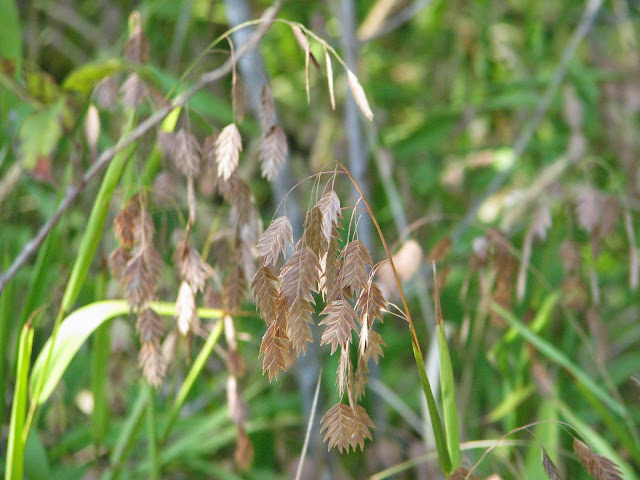
Several neighbors commented on the number of butterflies that the flowers attracted. That was then.

This was a few days ago. Sadly, the flowers had faded after about three weeks and I was left with a garden of not particularly attractive spikes that would soon scatter thousands of seeds.

To clean things up a bit, I started removing the flower spikes. This is an after picture. I did not think about taking before and after photos until I was halfway finished so I don't have photos of the same area. Anyway, the garden looks much tidier now.

Autumn Sage, Salvia greggii, glows in the morning sunlight. This sage is not just for the fall season. It also blooms heavily in the spring and lighter throughout the summer.

This aster appeared in my decomposed granite next to the street last year. I think it may be Heath Aster Symphyotrichum ericoides. Can any aster experts confirm or deny?

It is only about a foot tall and I am sure it has an evil plot to rule my garden, but it sure is pretty when it is covered in flowers. The bees and small butterflies cannot get enough of the flowers.

Around in the backyard, I thought I removed all of this Willowleaf Aster, Symphyotrichum praealtum, this year. It aggressively sent up suckers within a five foot radius of the mother plant after only one year. I decided it was not worth the real estate commitment for 2-3 weeks of flowers. I will go after this plant after it finishes blooming.

Here is a patriotic display of red Autumn Sage, white Mealycup Sage, and blue Mealycup Sage, Salvia farinacea.
The pictures above were taken on Saturday. We received a nice rain Saturday night, so I took more pictures Sunday morning.

I have been concerned as to how this decomposed granite pathway will handle heavy rains. Before I added the decomposed granite this year, it was not uncommon for some of the soil to wash onto the sidewalk after a rain. So far, no major problems with the decomposed granite. I think the addition of the steel edging steps helped level out some of the slope and slow the flow of water.

I really like the large rocks I added around the rain garden. I added more Sedum to fill in the spaces between the rocks.

In other areas, volunteer Scarlet Sage, Salvia coccinea, and Gregg's Mistflower, Conoclinium greggii, fill in the spaces. I thin out excessive growth as needed to keep the rocks from being hidden.

The Sages, Yuccas, and Zexmenia are more easily seen now that the Liatris flower spikes are gone.

Autumn Sage.

Zexmenia and Skullcap.

Hesperaloe with Aromatic Aster, Symphyotrichum oblongifolium, in the background.

More Autumn Sage and Zexmenia grow near the front of the house. The birdbath is a traveler. I keep moving it around the front and back yards looking for the perfect spot. I think it is rather photogenic.

It is also slightly off level. Here is a shot of the birdbath from the other side.

The berries on the Possumhaw Holly, Ilex decidua, are red. Soon the leaves will drop and the berries will remain on the bare stems until the Cedar Waxwings pick them off in the spring.

Another shot of the blue and white Mealycup Sage in the backyard.

One more sage photo to close this post. This is Mountain Sage, Salvia regla. The large orange flowers bloom for several weeks in the fall.
More rain is expected this week. The ground is fairly moist now, so we should get some runoff to begin filling the lakes. Lake Lavon, Plano's primary water source, is more than 12 feet below its full level.












































